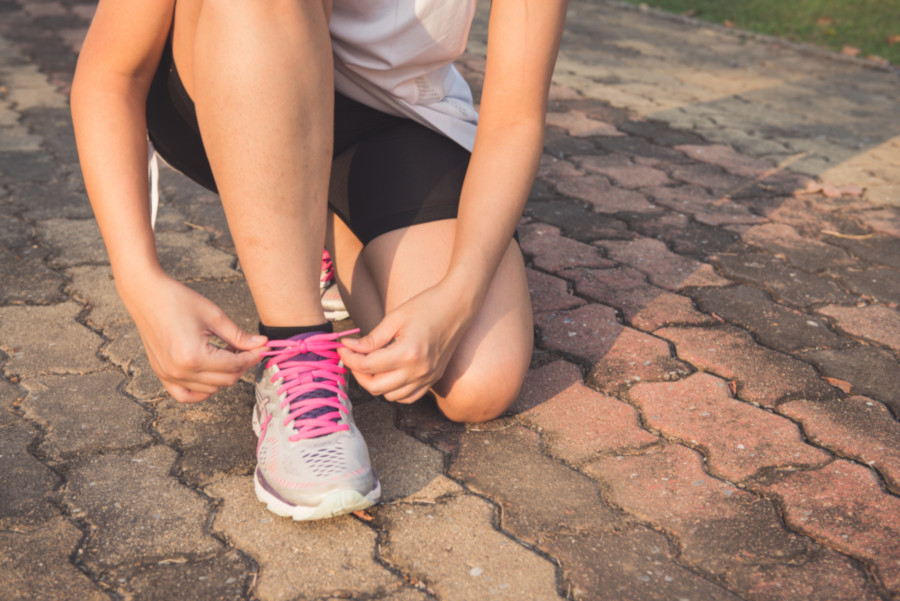Stay in Stride with Proper Foot Care This Summer

June 19, 2018
Summer beckons us to go outside. Going for walks in your neighborhood or our local trails is good for body and soul.
Walking is one of the simplest ways to improve your heart health. According to the American Heart Association, walking at least 30 minutes a day helps reduce your risk of heart disease and stroke, helps improve your blood pressure and helps maintain your weight. Other benefits include helping to reduce your risks of osteoporosis, breast and colon cancer and diabetes.
Walking feels best when you have healthy, happy feet! With proper detection, intervention and care, most foot and ankle problems can be lessened or prevented. Here’s how.
Proper Footwear:
While it’s tempting to wear sandals on summer walks, wear supportive athletic shoes that fit well and cushion your feet. Choose synthetic fiber socks to help prevent blisters and wick moisture away. Replace your shoes every 300-500 miles to better absorb shock and help prevent injuries.
Protect Your Feet:
When you go barefoot, you can step on glass, nails, fish hooks, you name it. It can be painful and cause infection. In the summer, we remove many sharp objects from the bottom of the foot. Wear shoes or supportive sandals to prevent punctures and other injuries such as stubbed toes and sprained ankles. When it comes to flip-flops, save them for the beach and pool.
Broken Toes:
Drop a heavy planter on your toe or stub it on outdoor furniture and you may be using language more colorful than your patio flowers. Broken and fractured toes can swell up, bruise, damage the nail and hurt when you walk or bend it. If you think you broke your toe, it’s best to have a podiatrist take a look and prescribe treatment, which is usually minimal.
Plantar Fasciitis:
This is the most common cause of heel pain. The plantar fascia lies on the bottom of your foot, connects the heel to the ball of your foot and supports the arch. People notice pain near the heel with the first few steps in the morning being especially painful. Often the pain goes away during activity but comes back afterwards. We recommend a variety of treatment options used in combination which include rest, ice, stretches and orthotics. It’s best to seek treatment early before it worsens and becomes more painful.
Bunions:
A bunion is a painful, bony bump on the inside of the foot at the big toe joint. Bunions are more common in women because stylish, tight shoes can accelerate the condition. Since bunions often start small, you can manage pain and slow progress by wearing shoes that fit properly and offer a wide toe box that allows toes to wiggle. Other remedies include bunion-shield pads, orthotics and icing.
Most people log 75,000 miles on their feet by the time they reach age 50. So take care of those feet and you’ll enjoy the journey!